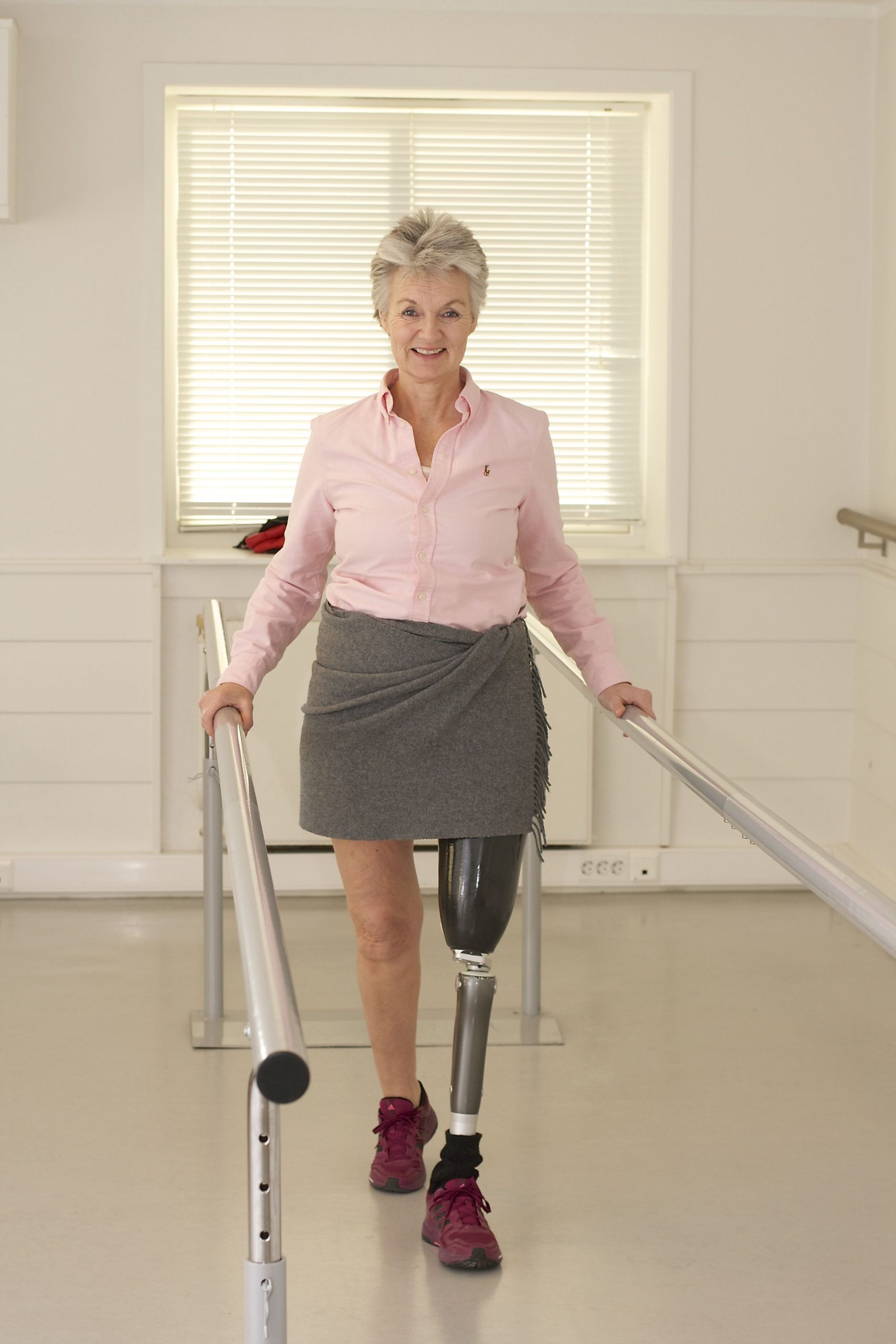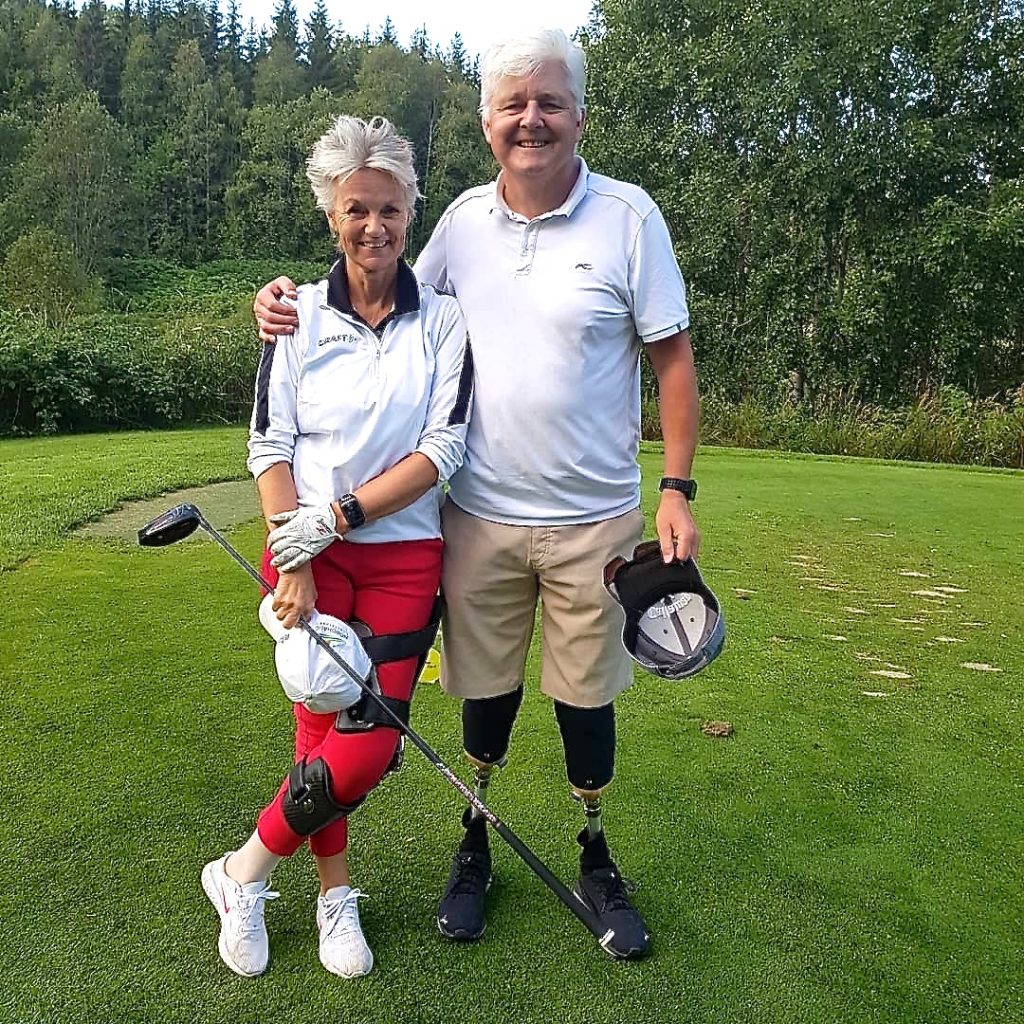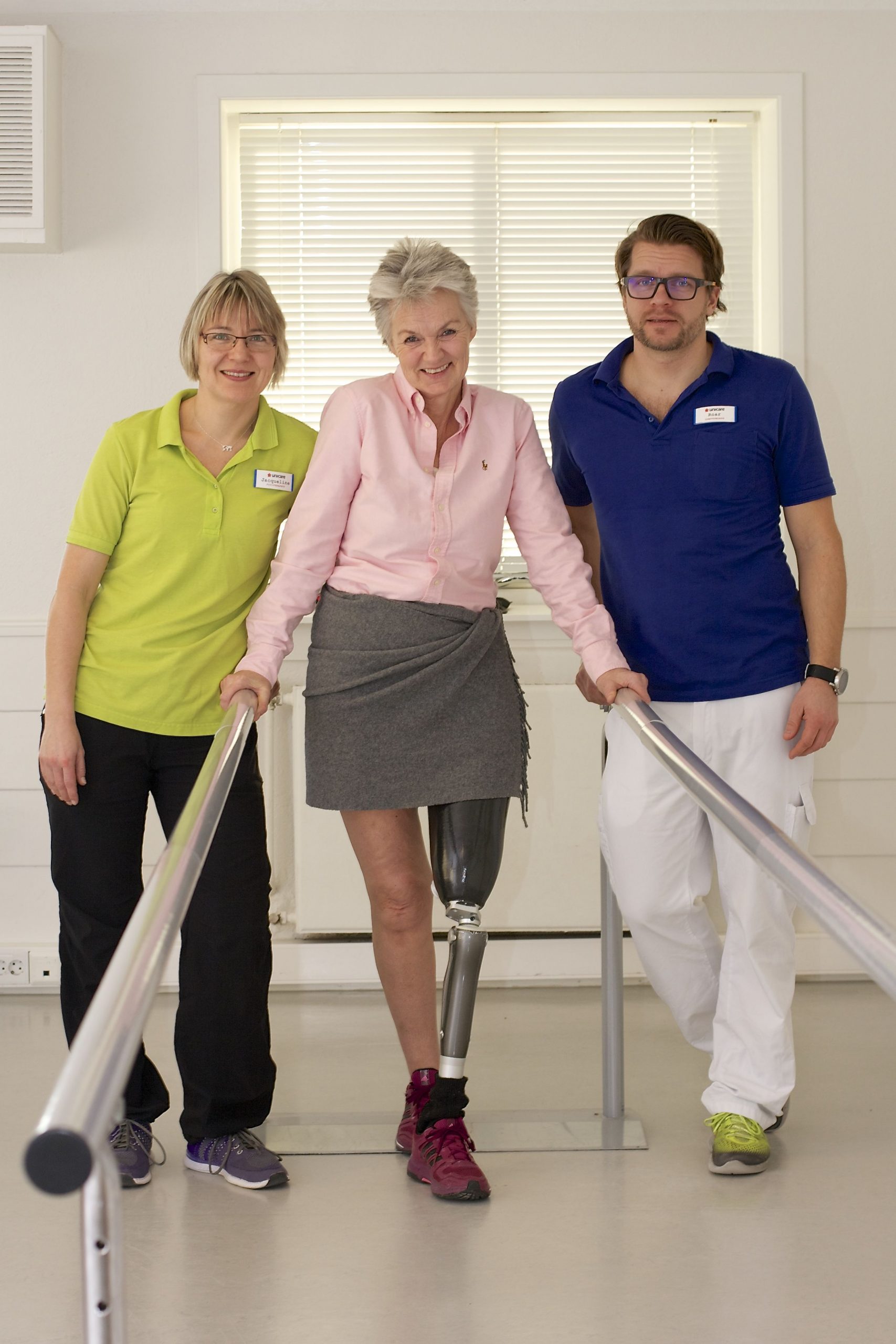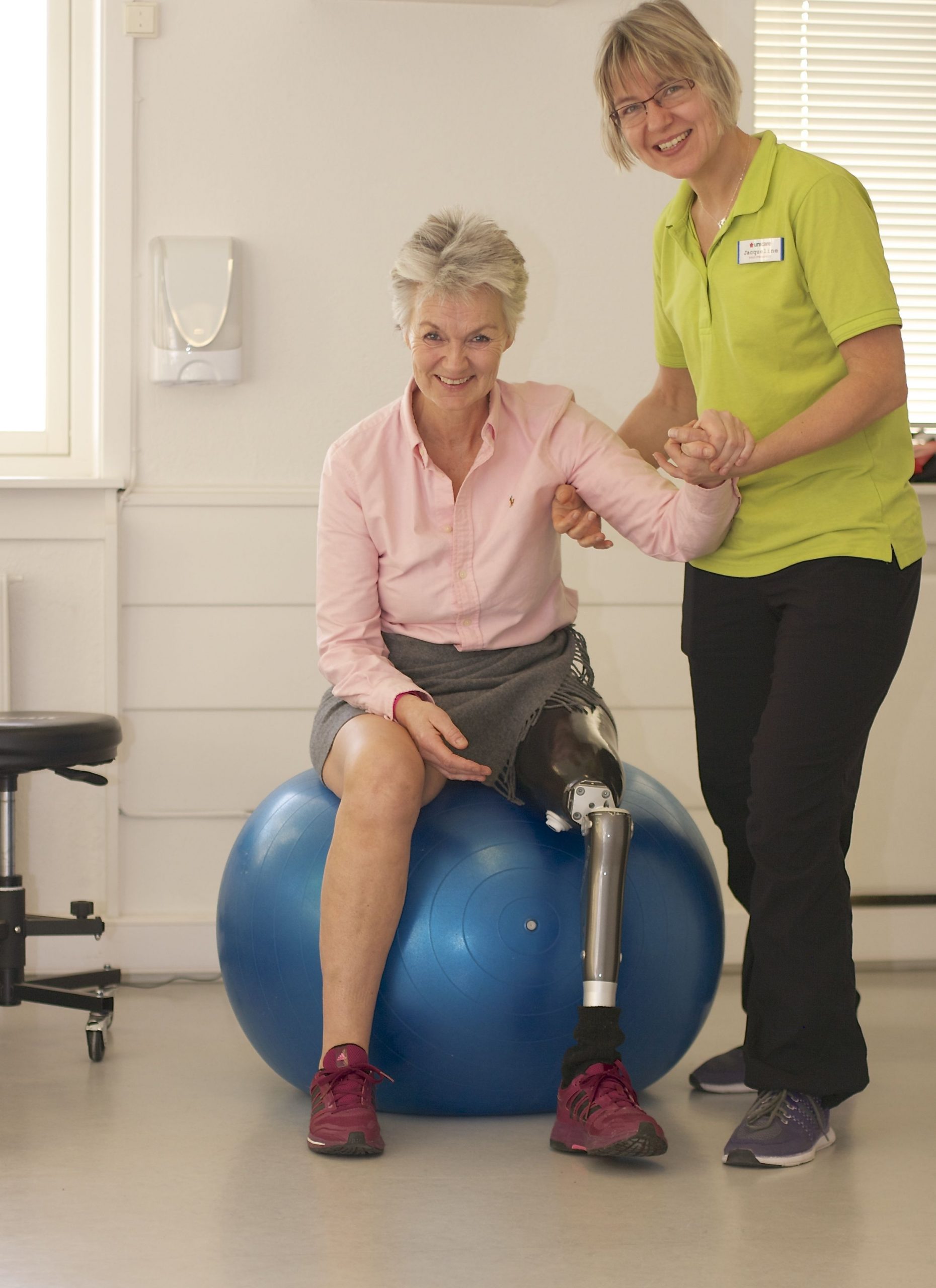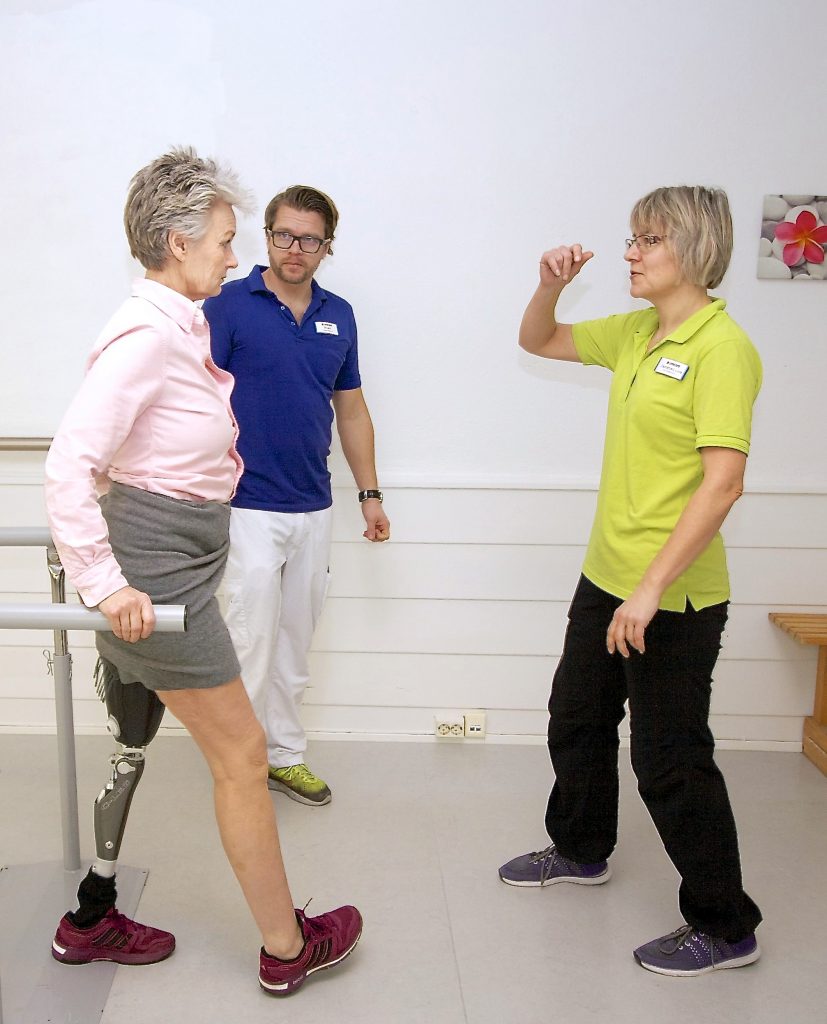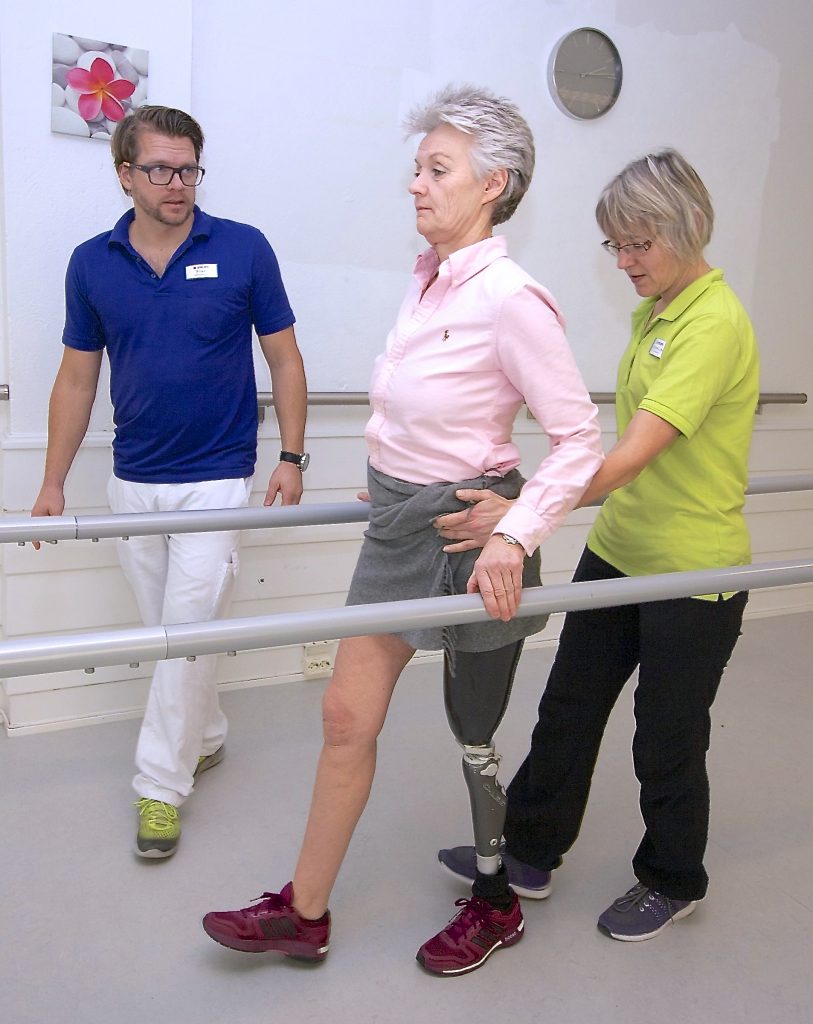The paragolf gave Benedicte her previously very activity-filled life meaning again
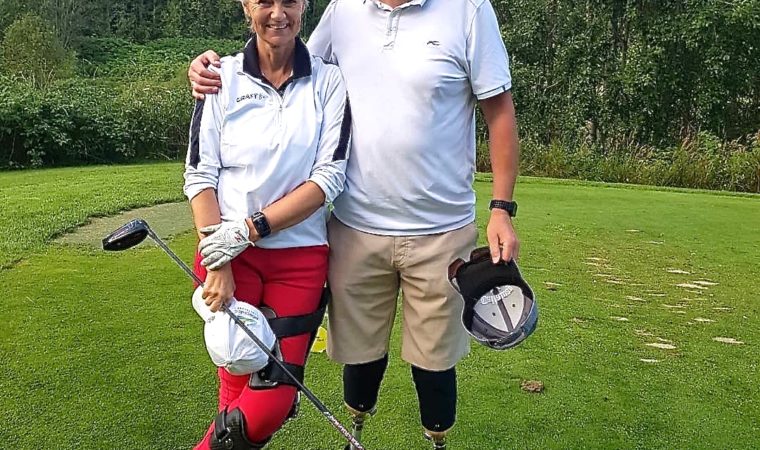
TV At Unicare Fram, Benedicte learned to find the balance between activity and rest. After hard and effective months of training, she becomes increasingly stronger in the body. Photo by Marte Nordahl. After her stay, the paragolf gave her a new feeling of mastery and lots of self-confidence. She also trains with peer and inspirer […]
– I have also learned to appreciate all the small pleasures in everyday life. Just knowing that my leg does not fail while I walk is wonderful, she says happily.
By Marte Nordahl
Benedicte Finnema experienced the nightmare of an alpine accident in Hemsedal 14. February 2016. It was a fantastic ski day, completely windless with blue skies and fourteen degrees below zero. With her was her friend Kirsten who took a Snap from her at the Tinden lift before they drove further out into the fresh snow outside the main trail. It was 1050 o’clock.
The next few seconds were to be fateful. Benedicte had been active in alpine skiing for many years. She was also well-known in the loose snow area and had driven there hundreds of times before.
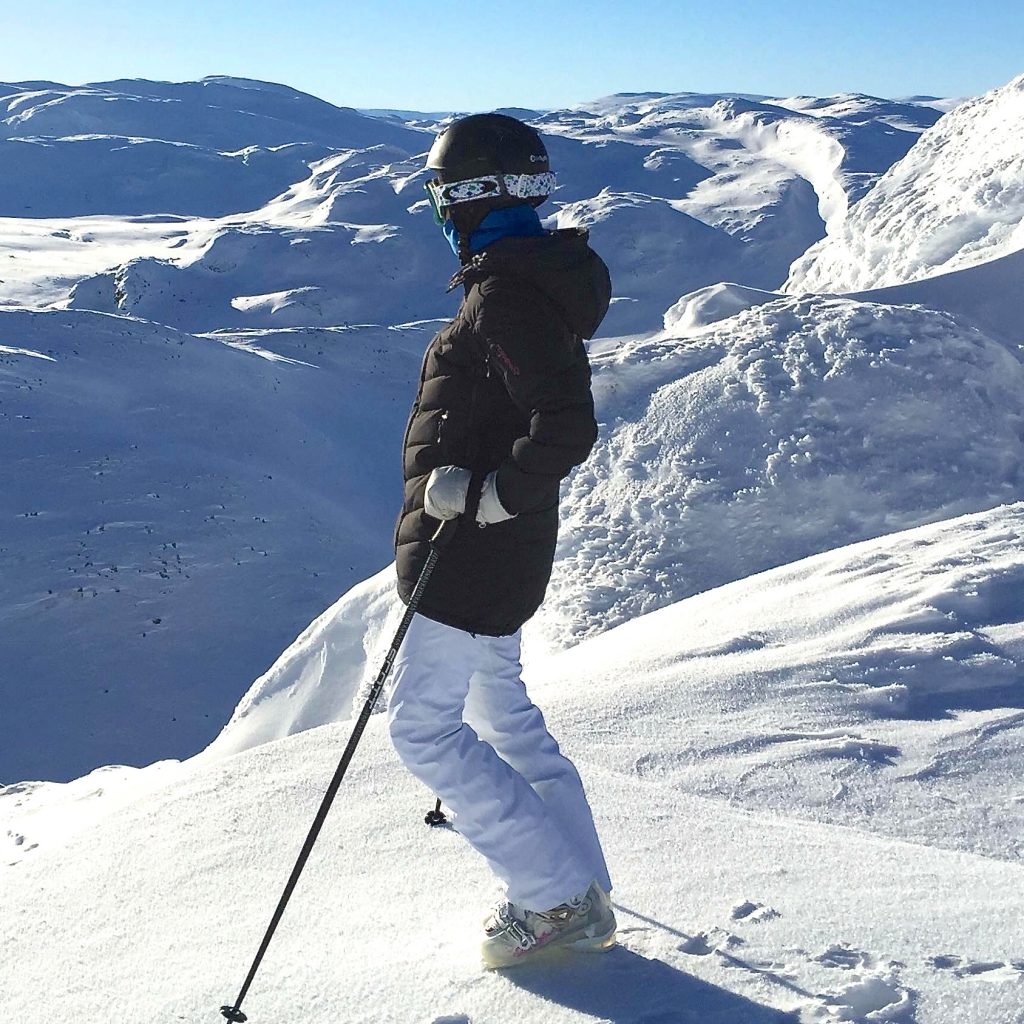
Drove straight into a rock
– As I was about to turn right to get down to the main track, I drove straight into a rock that was under the fresh snow. I got a twist to the left and stuck the ski in a tree root. While the ski released, the boot got stuck. The next second I did somersaults and landed on my back in the terrain just a hundred meters away from my own cabin area, she says.
Behind her, Kirsten drove at breakneck speed. She happens to be a doctor and came quickly to the scene of the accident. While the ambulance struggled to get up into the terrain, the Ski Patrol luckily managed to reach all the way to Benedicte. Kirsten got hold of the first aid bag and put morphine in her thigh.
Winding road to Ullevål
– At the health center in Hemsedal, I was received by a district doctor who had worked with injured patients for 40 years. Unfortunately, he did not understand the extent of the serious accident. He concluded that the injury was not acute, and sent me on by ambulance to Ringerike hospital. CT was first taken when I arrived at Ringerike Hospital. Since they also did not understand the severity of the extensive damage, they did nothing.
Benedicte was rushed on by ambulance to the Deacon’s Home in severe pain. When she finally arrived in the evening, her leg cracked. She was finally operated on for nine hours of overtime.
Too extensive damage
– If Ringerike Hospital had operated on me, I would most likely have kept my leg. When I woke up on the morning twig, the surgeon informed me that the injury was too extensive and complicated for them. Thus, I had to be sent on to Ullevål. In the course of 20 hours, I had visited four different health agencies, Benedicte stated.
She emphasizes that after a high-energy accident, it is important to have surgery within eight hours of the accident. Since she had not received the right treatment in time, the surgeons were unable to save her leg. Compartment syndrome / lodging syndrome literally destroys tendons, muscles and nerves because the legs / legs crack due to the pressure after untreated high-energy fractures.
12 operations
The first operation was performed at Ullevål one day after the accident. At first she did not understand what the doctors were talking about. She was terribly ill and remembers very little from the first week.
Within a year and nine months, Benedicte underwent surgery twelve times. The largest operation around three weeks after admission resulted in a serious infection. Both the operations and the hard training between each time was a huge strain.
Down and then up again
Benedicte received crisis psychiatry and a psychiatrist immediately after the accident. She lay motionless for four weeks.
– It was challenging to neither recognize his own body nor reaction pattern. Seeing my life fade away was experienced as a great sorrow. Everything was dark. I could not feel anything, says Benedicte
The first year after the accident, she struggled severely with her psyche. For Benedicte, it was difficult to realize that she would most likely lose her leg. Appetite and 65 percent of muscle mass disappeared. Her leg hung and snake.
Got up again
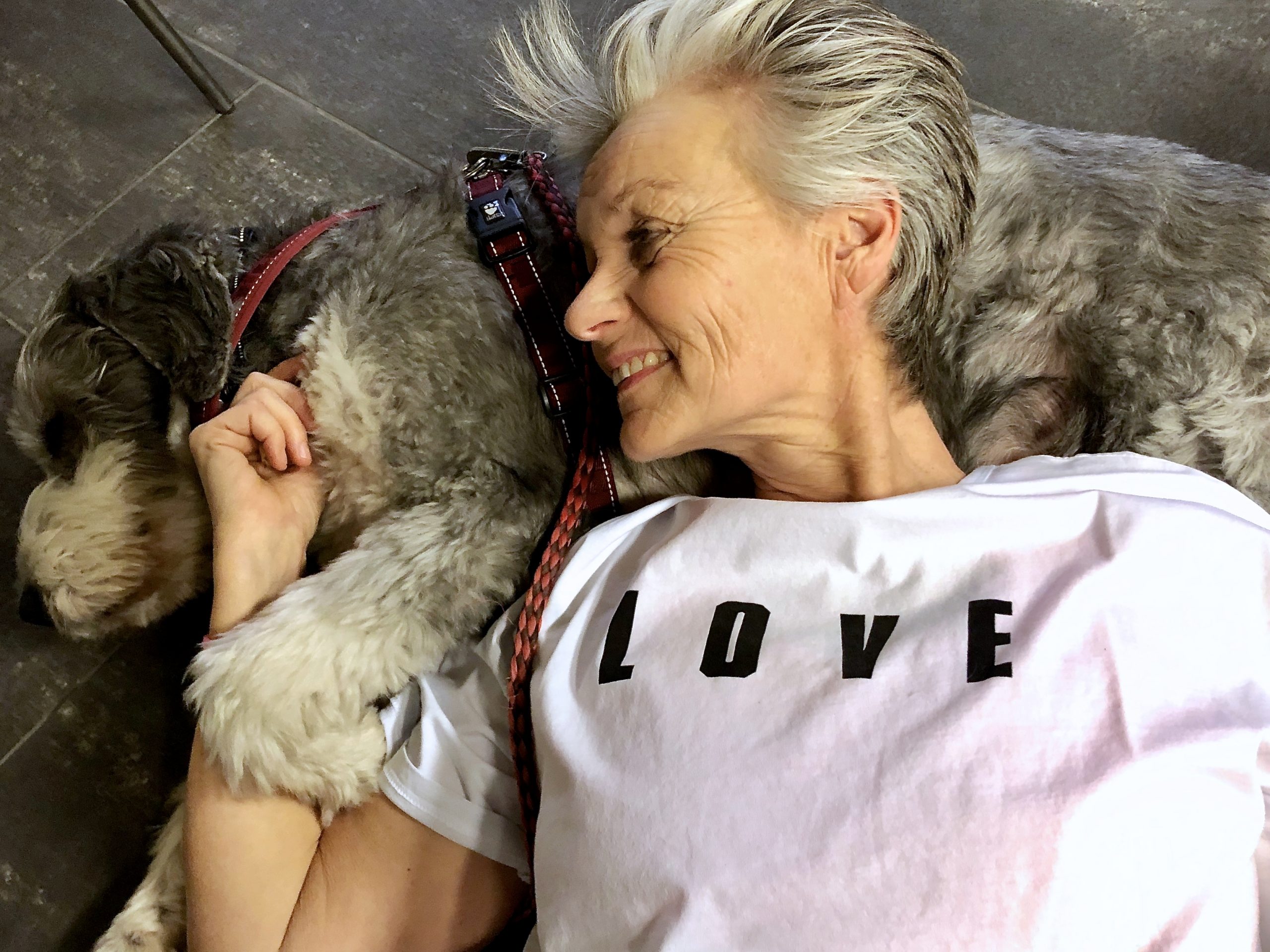
After four stays at a rehabilitation center at Skogli in Lillehammer, her motivation slowly but surely began to return. In 2017, the mourning period was over.
– My own spark of life made me get up again. In addition to my daughter and dog, both the training and my own life experiences strengthened me. Instead of digging deeper, I used the opportunities and resources around me.
Rapid thigh amputation
The surgeon at Ullevål tried everything he could to save Benedicte’s leg. She had a long prosthesis inserted from the ankle and up to the thigh.
– After a year and a half, I got severe pain in my leg. The prosthesis was then on its way out of the body. In October 2019, I was rushed to the orthopedic department at Ullevål. The next day, the surgeon decided to amputate my leg up to my thigh. Fortunately, the amputation went very well without any complications. It was a relief to be amputated. The leg was dying and I was already used to having one leg smaller. I have not had any complications afterwards. Only a little stinging right after operations, completely without any kind of pain or discomfort with scars and wounds, she says happily.
Meets the device before an amputation
Roar Seim has worked as a sports educator at Unicare Fram at Rykkinn since 2011.
– Benedicte met an equal in Momentum, Mark Miller with us before the actual amputation. Mark tries to start a project where the client meets the device before they are amputated. They get to see what the starting points and premises are, so that they know what they are going for, says Roar.
– Mark has helped me a lot. I feel well taken care of and have had a long time to get used to it. I am privileged to have so many people with so much expertise around me. It makes me feel safe. The peer service is very important. Here I get to talk to other amputees, says Benedicte.
Fast training
Benedicte came to Fram on Halloween in 2019. Here she enjoyed her eight-week stay with other amputees, physiotherapist Jacqueline Neugebauer and sports educator Roar Seim. She was discharged 16. January.
– We first started with training the body without a prosthesis. Here we worked a lot with strength and balance training with one leg, where we limped around with crutches. Benedicte was very motivated. Thanks to her good shape, she used the prosthesis after only three weeks. It usually takes longer before you get a prosthesis and are ready for training, says Jacqueline who has worked at Fram Unicare for 11 years. She has been working with Benedicte since after the amputation.
Walking and balance training
The training began with walking and balance training, where they walked on a walkway both with and without crutches. They also went up stairs and on walks outdoors.
– The challenging training requires high concentration, in addition to strength around the hip, abdomen and back. Walking on a prosthesis can be compared to balancing on a metal bar. Since Benedicte has been to many rehabilitation centers and trained before, the training went surprisingly fast, says Jacqueline.
– Expert guidance at an early stage means everything for her to be strong enough to be able to walk with a prosthesis. Should she learn this on her own, it is very easy to get used to immediate habits, says Roar.
Bumpy progress
Roar emphasizes that together with Benedicte, they have worked mostly to create a balance between activity and rest.
– To begin with, she wanted to manage everything in a very short time, which resulted in a mental breakdown before Christmas. Eventually she has understood that there is no «quick fix». She must spend the time needed to master each movement. We have worked a lot with setting boundaries. When she becomes stronger and equipped for new progress, she continuously moves the training one step forward, he says.
– We got the impression that Benedicte was a tough and strong person mentally. Along the way, it became clearer that she needs as much care as everyone else when they have undergone an amputation. She has had her ups and downs, Jacqueline continues.
Train to be safer
– In addition, we have worked hard to remove the fear of making mistakes, falling and how everyday life will be. Giving the patient gradual coping experiences so that they become safe in the various situations is important. This is how you remove a lot of fear, he continues.
Jaqueline emphasizes that since many people with prostheses are afraid of and travel outside in rough terrain, they arrange walking school once a week. The ambition with the walking school is for people to get used to using the prosthesis. Here we challenge them on their own level. They also have outdoor activities such as logging, badminton and leaf raking.
– The perseverance of the training has made me stronger and able to get up on both legs faster. I have also trained a lot on my own with one leg. At Fram, I learned a lot during training with the prosthesis. The educators and physiotherapists have shown me a lot of empathy, generosity and patience, says Benedicte happy.
Great life mastery
– The stay has also given me a new perspective on becoming a better person. At Fram I met many people with different challenges. This does something to you as a person. I have met wonderful people and made friends for life, she continues.
– After the stay, I was sent home with a life mastery and important tools that allow me to cope with daily life as well as possible. I’m not afraid to ask when I need help.
Benedicte is looking forward to a more active life eventually. She is happy about the good and painless start with the prosthesis. From bad experience, it still happens that she is waiting for setbacks. After the accident, Benedicte became 50 percent disabled. After returning to work in October 2018, she developed the fatigue syndrome fatigue after just a few months.
– I feel very tired after all these years filled with operations and pain. It has been a great strain on body and mind. I do not even notice how exhausted I am until I sit down. I envision that I will return to work only in June, she says.
Continues an active life
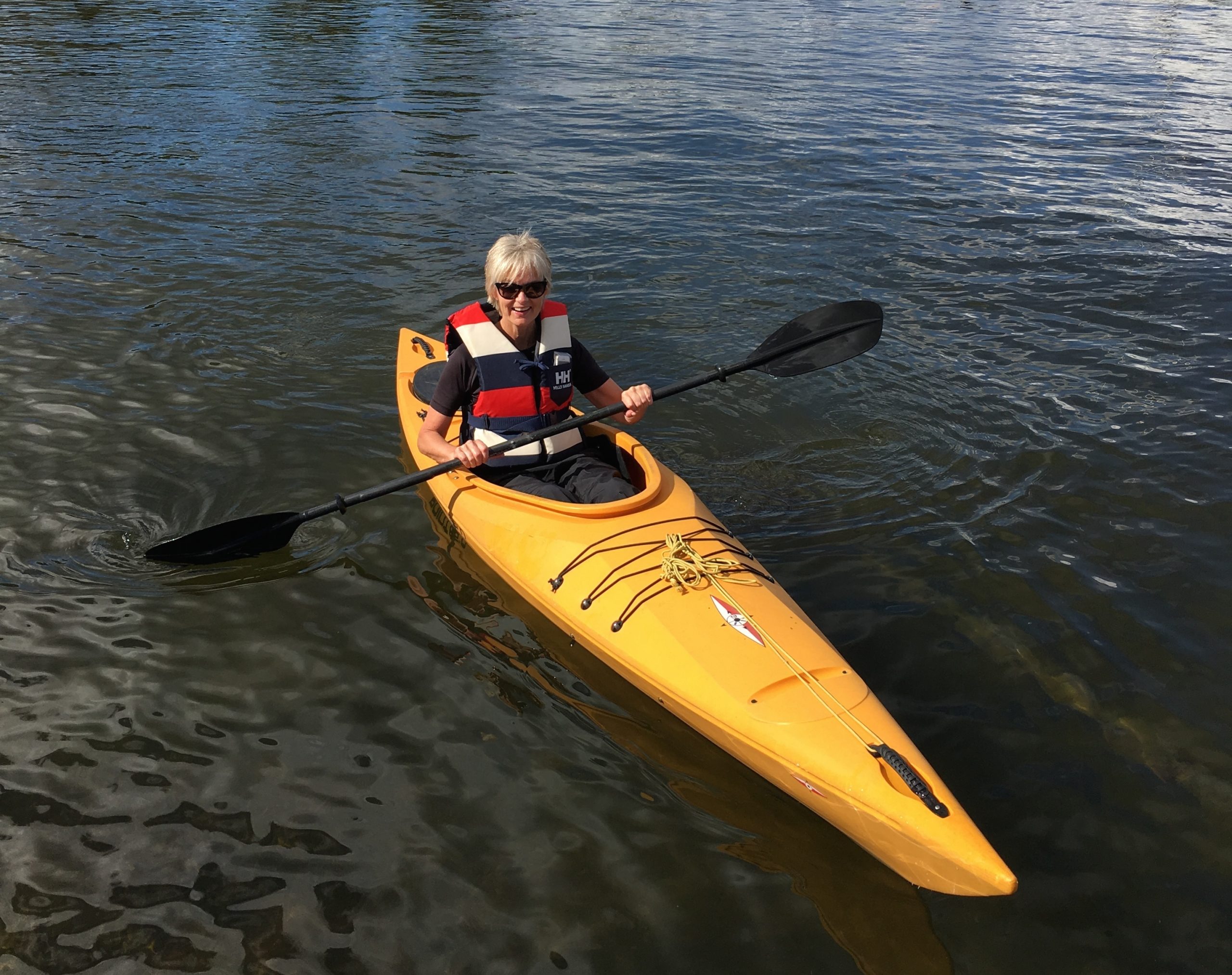
Benedicte understood that she had to bury her forge life, and define a new one that would be just as valuable and active. Since she has been a sports girl all her life, it was natural to search for other possible activities than alpine skiing. Activities such as strength training, kayaking as well as leisurely walks with the dog lifted her up. She also started with paragolf, which gave her a new arena for mastery.
– The feeling of mastery was euphoric, similar to the one I get when the ski season started where everything is fine and you just float down the ski slope. Since I have undergone wrist surgery after two falls in terrain with new prostheses, I have to find a new way to play, says Benedicte.
Life with new challenges
– It came as a surprise to me that I will sit in a wheelchair indoors for the rest of my life. In the case of thigh amputation, a wheelchair is recommended to rest the body. In addition, an adapted apartment will solve half of being tired in the body. If the stump allows it, I use the prosthesis every day. Benedicte has learned three important things that make her live an optimal life today.
– I have learned to live with the prosthesis. Ask for help, which is about shame and pride. Also, I am no longer afraid to set boundaries for myself and others.
Now that Benedicte knows what she has to deal with, her life has come more into place. Life goes on at a slow pace. She trains both at home and at the gym. In the winter of 2021, she will participate in the Knights’ Race.
– I look forward to enjoying more sunny days on Bygdøy. Furthermore, I look forward to the opportunity to go in the pool at Fornebu, and not least to the start of the season in Paragolf.
